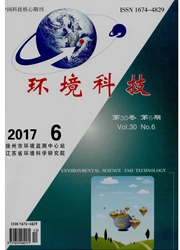

 中文摘要:
中文摘要:
为了更加准确地预测PM2.5数值以便能够预先采取有效措施,以南京市为例统计收集了20132015年的PM2.5数据构成时间序列,提出基于小波和过程神经网络的预测模型。首先,对原始时间序列采用二进正交小波变换进行分解和重构,分离出原始序列中的高频部分和低频部分;然后对高频部分构建过程神经网络模型,对低频部分采用自回归模型;最后将2种模型的预测值叠加,得到原序列的预测值。通过与BP神经网络预测模型的对比试验分析,发现基于小波和过程神经网络模型更好地预测了12月份数据,预测精度明显高于BP神经网络模型。
 英文摘要:
英文摘要:
In order to more accurately predict PM2.5values to take effective measures in advance. We take Nanjing as example to collect statistics from 2013 to the 2015 PM2.5data constituting time series forecasting model proposed wavelet and neural network-based process. First, the original time series dyadic orthogonal wavelet was transform decomposition and reconstruction to separate high-frequency portion of the original sequence and the low-frequency part. Then the high frequency part of the process neural network model was constructed and the low frequency part autoregression model was built. Finally, the prediction value of the superposition of the two models gave the predicted value of the original sequence. After analyzing comparative tests by BP neural network predictive model, we found that the process of wavelet and neural network model was better to predict the December data and the prediction accuracy was significantly higher than BP neural network model.
 同期刊论文项目
同期刊论文项目
 同项目期刊论文
同项目期刊论文
 期刊信息
期刊信息
